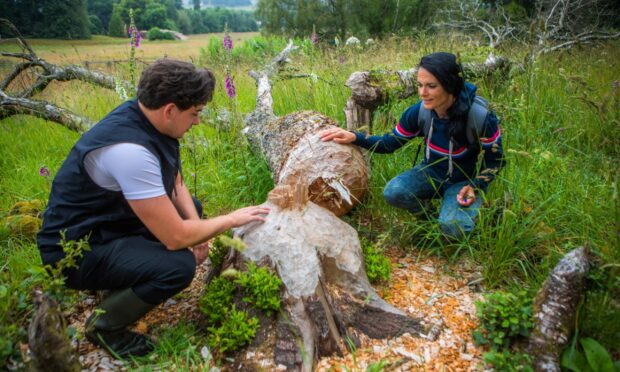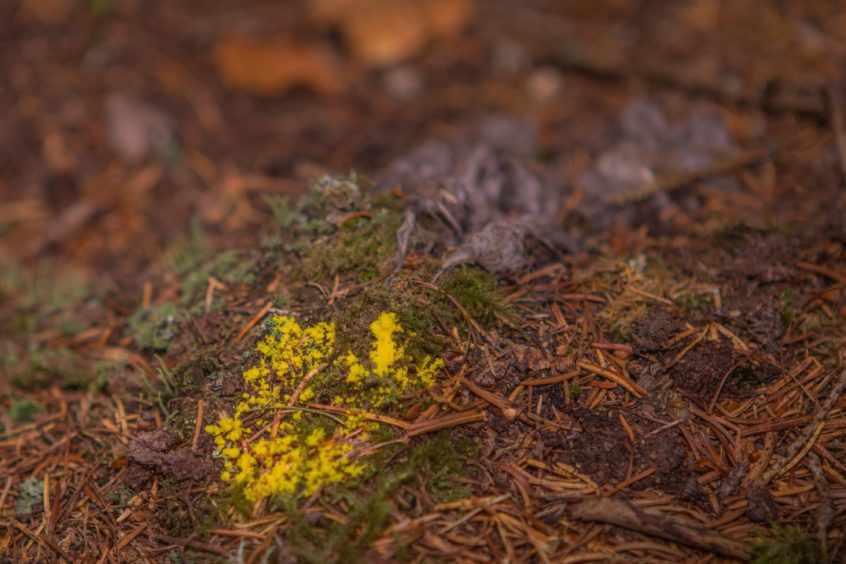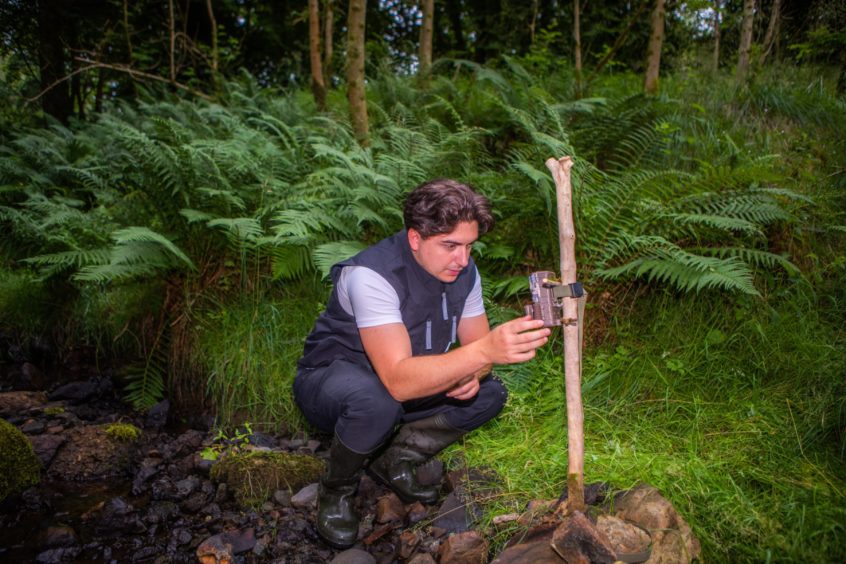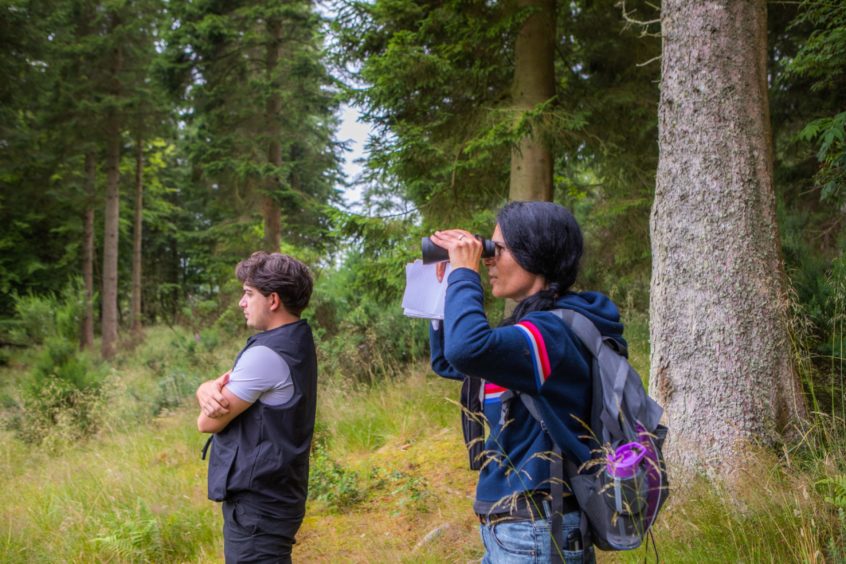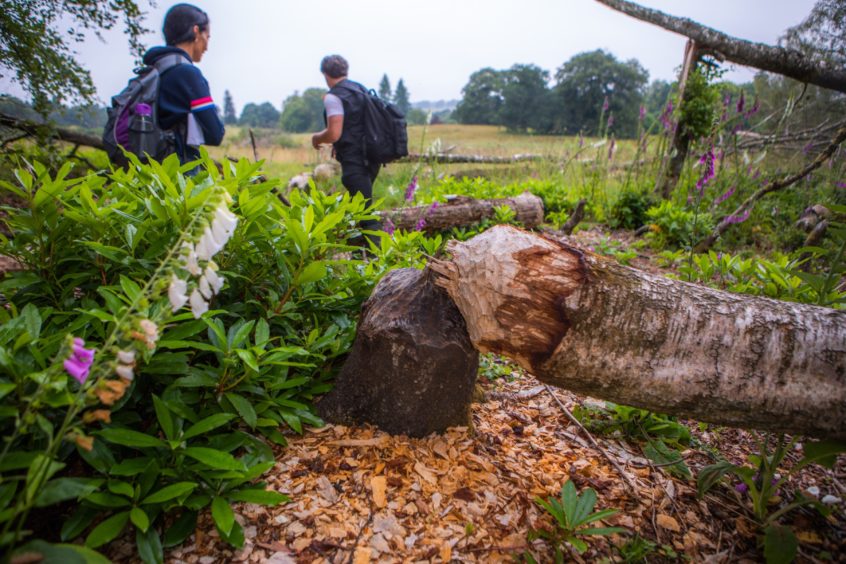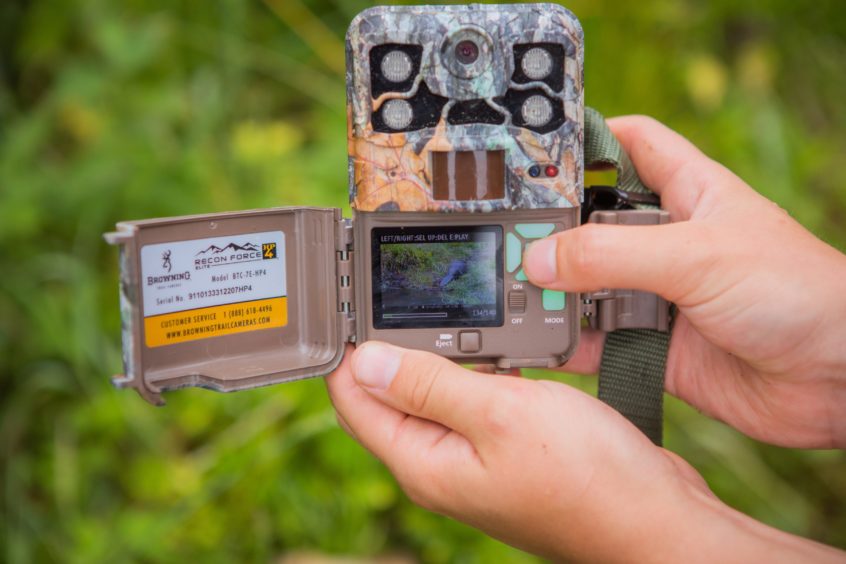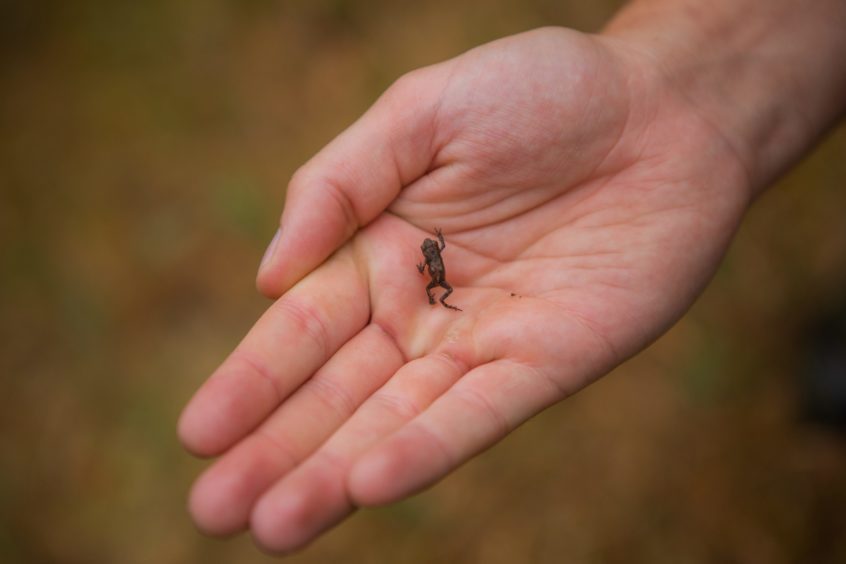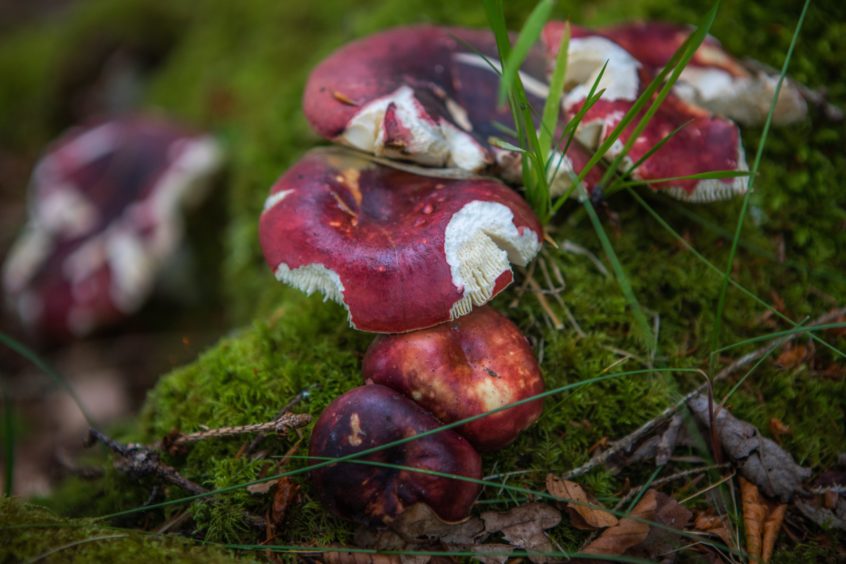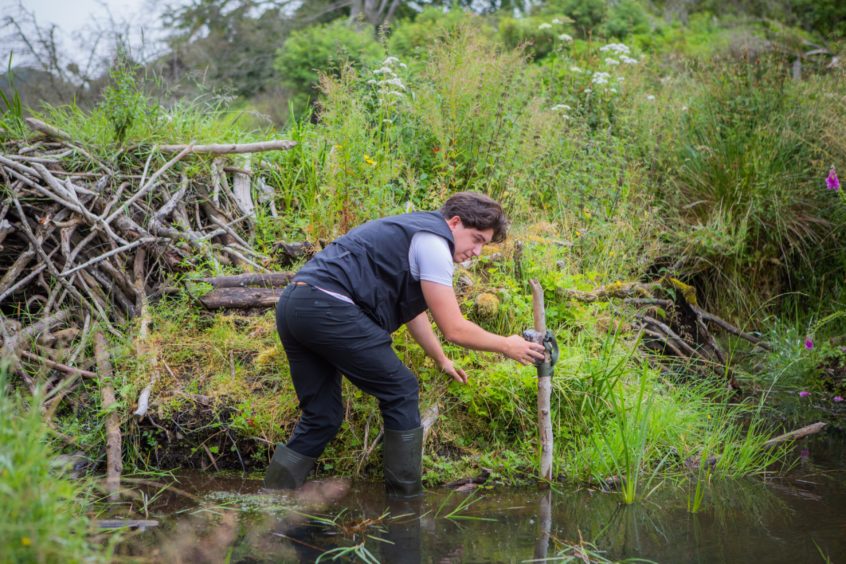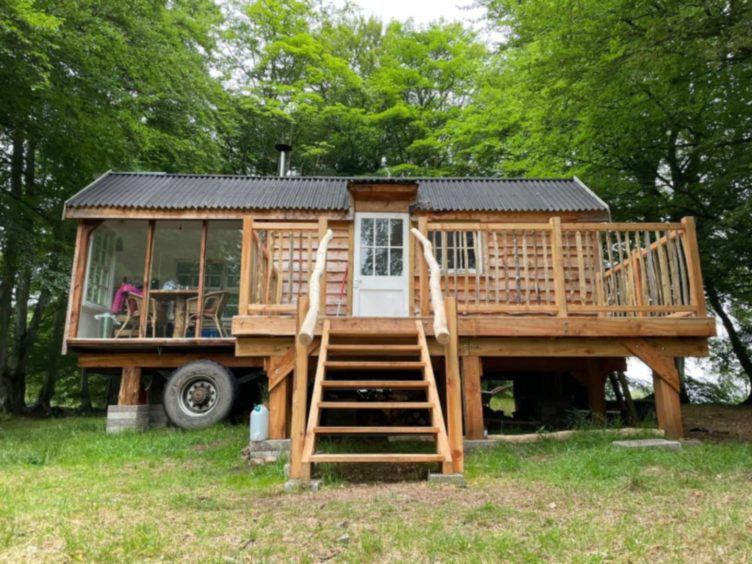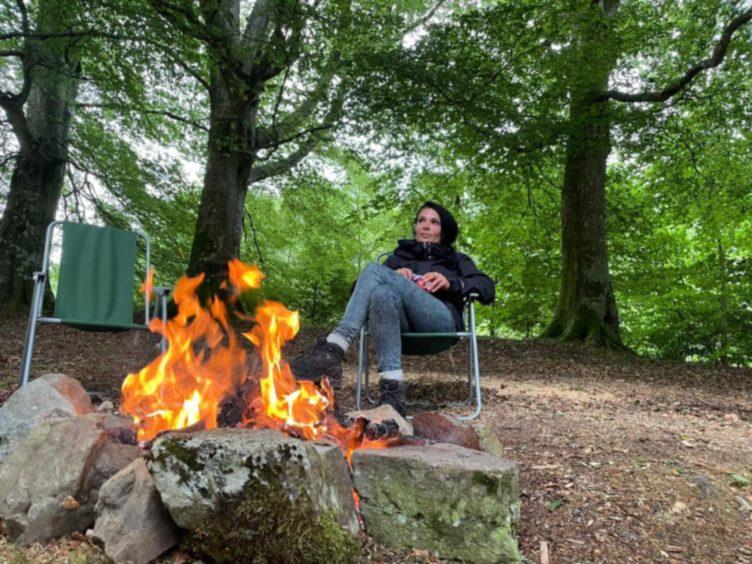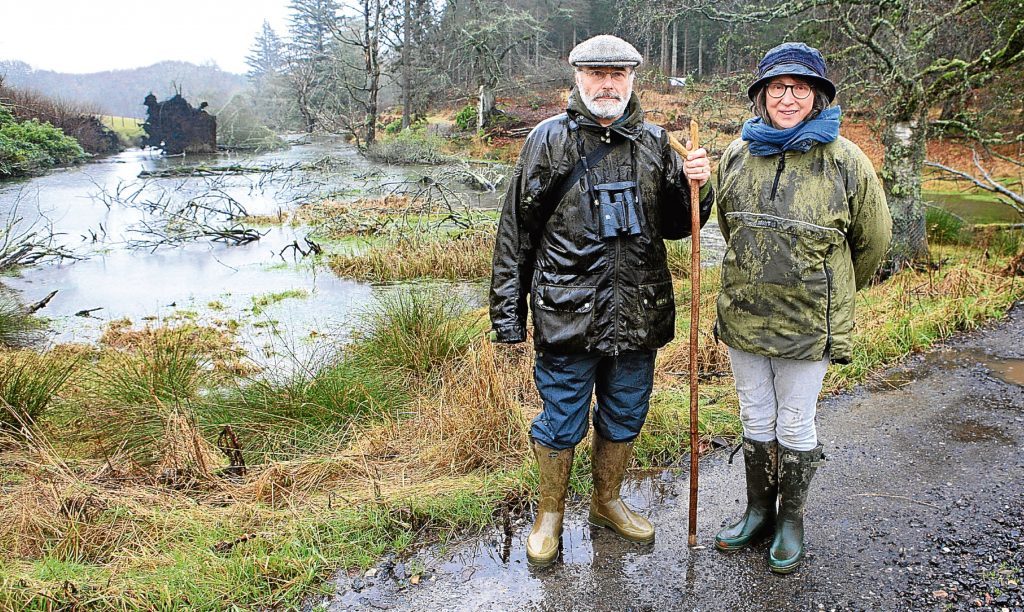Gayle explores the secret lives of mammals that thrive on Bamff Estate in Perthshire on a course with wildlife guide Wayne Gourlay.
I’m hunched down on the forest floor, peering at a coiled squiggle of pine marten poo.
It’s long, thin and full of fur, bones and feathers.
Pine martens are shy, elusive creatures so it’s hard not to get excited when you spot their droppings – a sure sign one of the creatures has recently passed by.
I’m on a wildlife detection course deep in the heart of Bamff Estate with Wayne Gourlay.
His mission is to offer an insight into the secret life of mammals that thrive here using tracking skills and trail cameras.
“Wildlife can be hard to spot, especially if it’s nocturnal,” he tells me.
“But signs animals frequent an area can be a good start to discovering all sorts of species.
“Burrows, tracks, leftover meals, fur, territorial markings and latrines are good indicators.”
How does Wayne, a zoology graduate, distinguish pine marten scat from that of foxes or badgers?
“Pine martens shake their bums when they poo – that’s why it’s spiral-shaped!” he beams.
“They eats voles, small birds, berries and insects so their latrines can be packed with fur and bones. Oh, and their poo can turn blue if they’ve eaten a lot of blueberries!”
Wayne has more than 20 trail cameras, many of which are dotted all over Bamff’s 1,300-acre estate.
It’s always exciting when, having left a camera recording for a few days, he plays back the footage.
He’s captured beavers, badgers, pine martens, otters, foxes and deer up to all sorts of antics.
BEAVER PARADISE
Bamff, an eco-estate near Alyth, is renowned for its pioneering beaver project and abundant wildlife, and it’s a brilliant outdoor “office” for Wayne.
Since two Norwegian beavers were released in enclosures on the estate by owners Paul and Louise Ramsay in 2002, (followed by Polish and Bavarian beavers), the creatures, which gained protected species status in 2019, have continued to breed.
They’ve made a significant impact on the landscape, converting a ditch into ponds and swamps by building a series of dams.
Signs of activity are everywhere – stripped bark with tooth marks, piles of twigs, sticks and branches, wood chippings and gnawed tree stumps.
Some may see this as destructive behaviour but Louise and Paul – and indeed Wayne – have a different view.
They argue that when beavers bring down trees, roots are unaffected and new shoots sprout up. They restore native ecosystems, contribute to biodiversity, benefit wetland species, and help promote ecotourism.
There’s also the argument that beaver dams filter out pollutants washed off farms and purify water.
“There are 18 to 25 beavers across Bamff at the moment, with three kits just born,” says Wayne.
“There’s a succession of dams and a lodge which is hidden underneath a rhododendron bush.”
There are many misconceptions about beavers. One is that they eat fish – they don’t.
Their teeth grow constantly – at the nifty speed of almost 0.5cm a month – which means they have a formidable gnawing force.
Wayne is lucky to have witnessed beavers “in the flesh” at Bamff, but reckons the next best thing is getting them on camera.
“They’re quite inquisitive. They’re not in any way tame here but they don’t mind if you stand quietly watching them. You sometimes see them slapping their tails when they get a fright.”
A quick glance at Wayne’s camera, erected rather precariously above a pool, shows dozens of clips of beavers swimming, diving, gathering wood and generally having a jolly old time.
“They’re so graceful on water; they don’t even break the surface,” he says. “They dive, bury food caches underwater and can stay underwater for three minutes.”
Heading along a path, we spot a series of beaver-felled trees, with clear signs of regrowth. I wonder if the creatures, nicknamed “nature’s engineers”, anticipated which direction the trees would fall?
“I’m not sure they’re that clever!” says Wayne. “There’ve been incidents of beavers being crushed by trees they’ve felled but thankfully that’s rare.”
WILDLIFE WONDERS
A movement in the undergrowth catches our attention. Squatting down to investigate, Wayne finds a tiny toadlet. He gently picks it up to take a closer look. Very cute!
Other fascinating finds include a badger latrine, mushrooms nibbled by red squirrels, a dead chick which Wayne reckons has fallen from a nest, holes in old trees – evidence woodpeckers have been drilling for insects – and splodged on a rock in the middle of a burn, we spot otter spraint (poo).
Those who sign up for Wayne’s courses will learn how to set up camera traps to target certain species. He sends on the best footage a week later.
He often disguises cameras with moss or twigs and occasionally uses lures to attract species.
PASSION
Growing up in Dundee, Wayne’s been passionate about wildlife since he was a wee lad. Trips to Blairdrummond Safari Park were a highlight of his childhood.
He studied zoology at St Andrews University and his dissertation focused on camera trapping.
He spent a month in the tropical rainforests of South America in 2019 developing his research skills with conservation organisation Operation Wallacea.
“Beavers are so graceful on water; they don’t even break the surface. They dive, bury food caches underwater and can stay underwater for three minutes.”
Wayne Gourlay
In Guyana, Wayne set up camera traps for jaguars, pumas and other exotic species.
He’d been aware of Bamff for years and was delighted when the Ramsays invited him to run courses on the estate.
Bamff is funded through a combination of farming practices and ecotourism, ranging from holiday lets (yurts, cottages, cabins and houses) to beaver tours.
It’s well worth staying overnight – you’ll be in with a chance of physically spotting beavers, which are regularly seen swimming around at dawn and dusk.
COOL CABIN
I was lucky enough to be staying in the off-grid Burnieshed Cabin, located in a quiet clearing in the heart of Bamff’s wilderness.
It’s accessible only by footpath and is a 10-minute walk along a path past multiple beaver dams.
There’s no electricity, Wifi or running water here but there’s a wood-burning stove with plenty of firewood and a gas camping stove. Water is provided in big containers and you can get top-ups from Bamff House.
The compost toilet is sparkling clean and boasts cracking views of the forest through a window.
Desperate for a wash or some snacks? There’s a shower at the house, exclusively for Burnieshed guests, and a cool wee honesty shop has a wide array of goods including fresh eggs, logs, and essentials like alcohol and chocolate!
There’s even a DIY cafe for guests, as well as walkers and cyclists passing through the estate, where you can make yourself a hot drink or snack.
I had a few hours to spare before dinner with Paul and Louise at Bamff House so I set up a deck chair outside the cabin and simply listened to the sounds of nature. How refreshing to hear so very little, other than the odd tweet of a bird and the distant bleeting of sheep.
Just after 7pm, I made my way quietly along the path in the vague hope that I might spot a beaver.
To my absolute delight, I saw not one, but two of the creatures!
At first I thought I was imagining things. Was the brown object floating on the surface of the water just a log?
I watched the “log” for a while before working out it was actually a beaver! I silently whooped with joy!
The creature made no noise, and was barely moving, but when it dived down into the water, I got a great view of its rudder-like tail. It popped up a few minutes later, further up the pond, and this time, it left a series of V-shaped ripples on the surface of the water. Just wow! I was so excited.
After a delightful roast dinner with Paul and Louise, Paul offered to walk me part of the way back to the cabin, showing me some more top spots for beavers.
This time we got a fantastic sighting of two kits, one swimming around near a dead tree in the middle of a pond, and the other, near a channel flowing out of the pond. I could barely contain my excitement.
It really felt like the icing on the cake to an absolutely fantastic day of discovery.
- Wayne’s next wildlife detection courses run at Bamff on August 26, September 5, 8, 12, 15, 22, 26 and 29. He’s happy to arrange other dates.
- See www.bamff.land or email waynegourlay@hotmail.co.uk
- The Burnieshed Cabin is off-grid but other accommodation at Bamff includes mod-cons such as electricity and Wifi.
- Keen on art? Local art teacher Bebe Geen is running nature-themed art workshops for young people in an old garage at Bamff, with dates running through August and September.
- Meanwhile, there are a whole host of citizen science projects going on at Bamff, from bug hunts to “natural navigation” (learning to navigate using nature’s clues), sensory walks, beaver tours and firemaking courses. www.bamff.co.uk/all-events
- Bamff Estate is entering an exciting new phase, with plans to create a new “wild land” on the existing area dedicated to rewilding. This will focus on extensive grazing with cattle, pigs and ponies to restore wood pasture.
